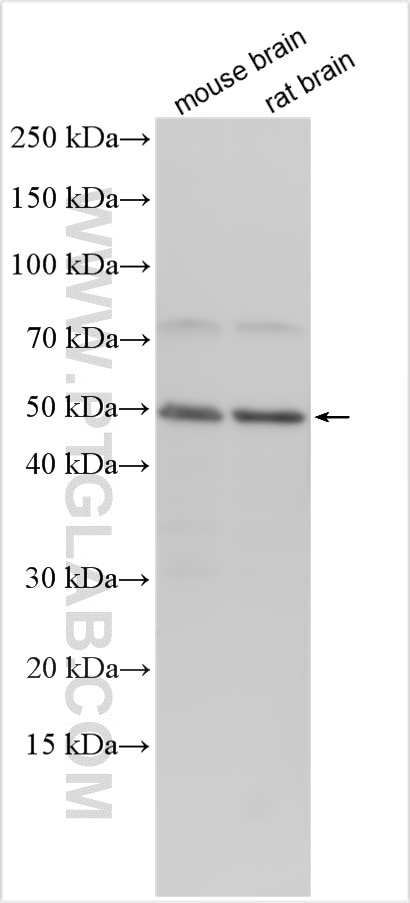Tested Applications
| Positive WB detected in | mouse brain tissue, rat brain tissue |
Recommended dilution
| Application | Dilution |
|---|---|
| Western Blot (WB) | WB : 1:500-1:1000 |
| It is recommended that this reagent should be titrated in each testing system to obtain optimal results. | |
| Sample-dependent, Check data in validation data gallery. | |
Product Information
25907-1-AP targets SCN3B in WB, ELISA applications and shows reactivity with human, mouse, rat samples.
| Tested Reactivity | human, mouse, rat |
| Host / Isotype | Rabbit / IgG |
| Class | Polyclonal |
| Type | Antibody |
| Immunogen | SCN3B fusion protein Ag23201 Predict reactive species |
| Full Name | sodium channel, voltage-gated, type III, beta |
| Observed Molecular Weight | 45-50 kDa |
| GenBank Accession Number | BC126265 |
| Gene Symbol | SCN3B |
| Gene ID (NCBI) | 55800 |
| RRID | AB_3669506 |
| Conjugate | Unconjugated |
| Form | Liquid |
| Purification Method | Antigen affinity purification |
| UNIPROT ID | Q9NY72 |
| Storage Buffer | PBS with 0.02% sodium azide and 50% glycerol pH 7.3. |
| Storage Conditions | Store at -20°C. Stable for one year after shipment. Aliquoting is unnecessary for -20oC storage. 20ul sizes contain 0.1% BSA. |
Background Information
The sodium channel is a multi-subunit protein complex composed of a single large α-subunit along with smaller additional β-subunits. There are at least three different β-subunit genes, SCN1b, SCN2b, and SCN3b, all of which are expressed widely in excitable tissues. The bands on Western blots for SCN3b (45-50 kDa) were significantly larger than the predicted molecular weight, which is consistent with the protein being glycosylated. The two bands on the Western blot could be due to different levels of glycosylation or alternative spliced isoforms. (PMID: 11744748)
Protocols
| Product Specific Protocols | |
|---|---|
| WB protocol for SCN3B antibody 25907-1-AP | Download protocol |
| Standard Protocols | |
|---|---|
| Click here to view our Standard Protocols |



